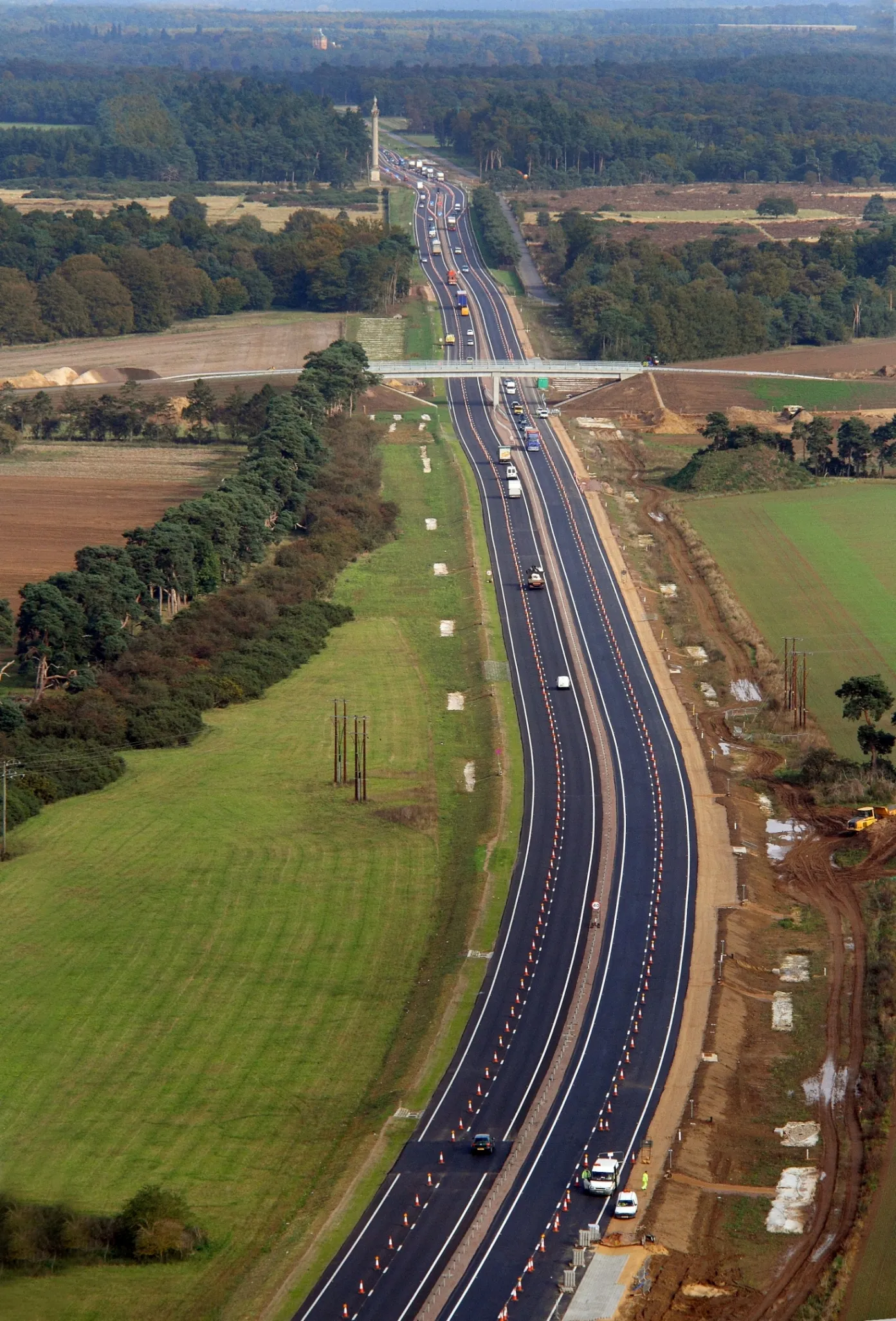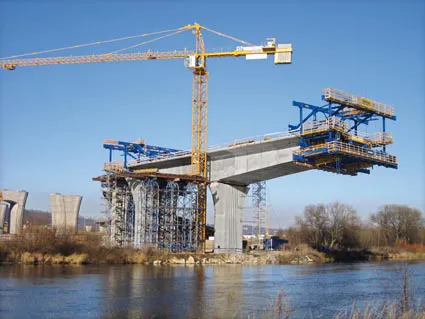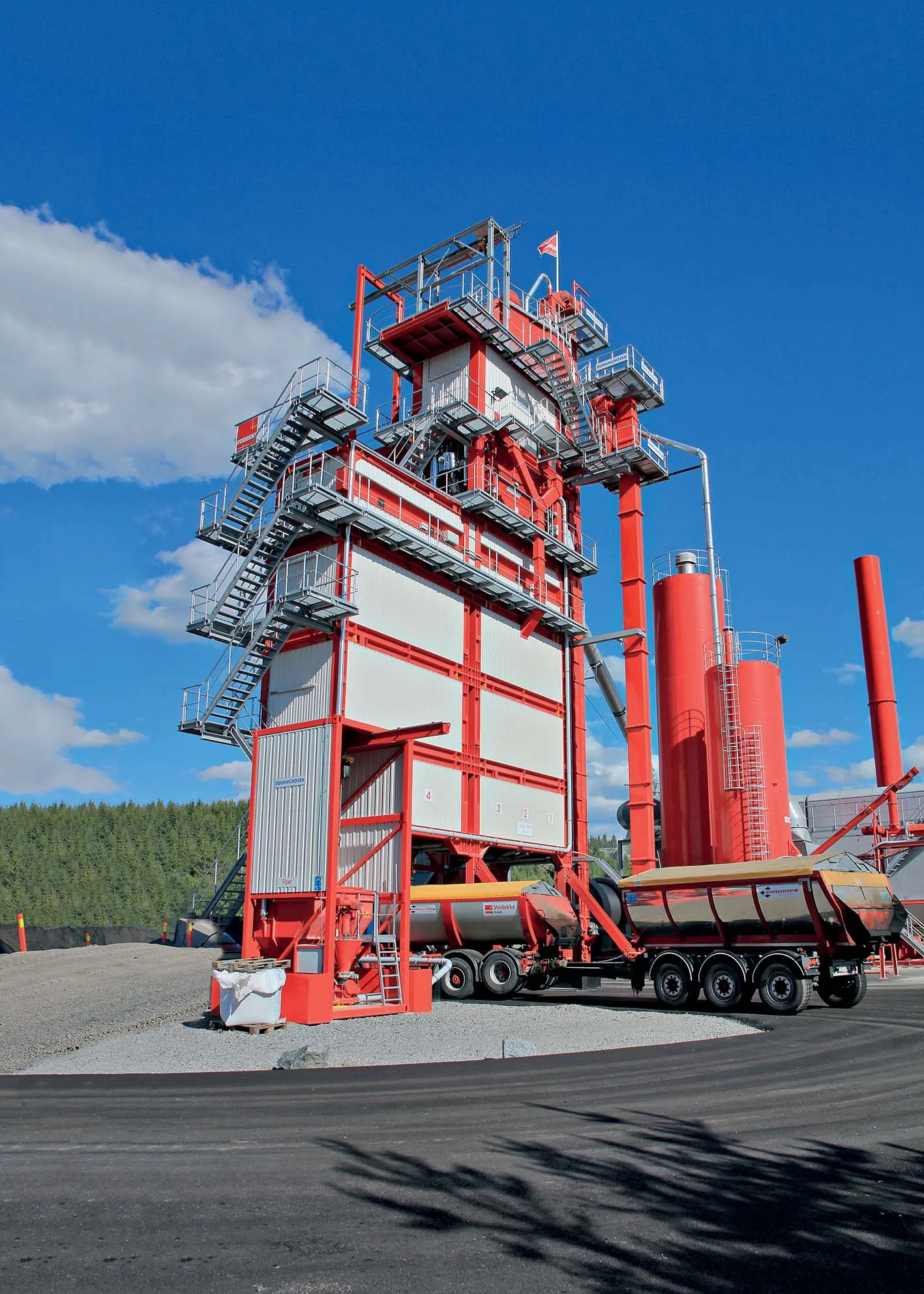
Contractor
Main construction on the project started in January 2013 and the completed dual carriageway was officially opened by the Secretary of State for Transport, Patrick McLoughlin MP, at a ceremony attended by local stakeholders.
The scheme involved the widening of the strategic route linking Suffolk with Norfolk to dual two-lane standard along its length and included the construction of a 5.8km bypass to the north of Elveden village in Suffolk. It has also involved the construction of six major new bridge structures, forming either underpasses or overbridges.
330,000tonnes of earth were moved during the project, which also involved laying around 140,000tonnes of asphalt, lifting 1,500 tonnes of bridge steel work and pouring 4000 tonnes of concrete. Over 32km of drainage pipes and 50,000m3 of earth were replaced with gravel to take water away from the carriageway.
The scheme achieved 20% savings over its original projected cost as a result of nearly €25.2 million (£20 million) of savings by Balfour Beatty, including the avoidance of national grid and gas infrastructure diversions and the retention of more of the original A11 than originally anticipated. Some landscaping work will continue in the New Year and is due to be completed by the end of March 2015.








